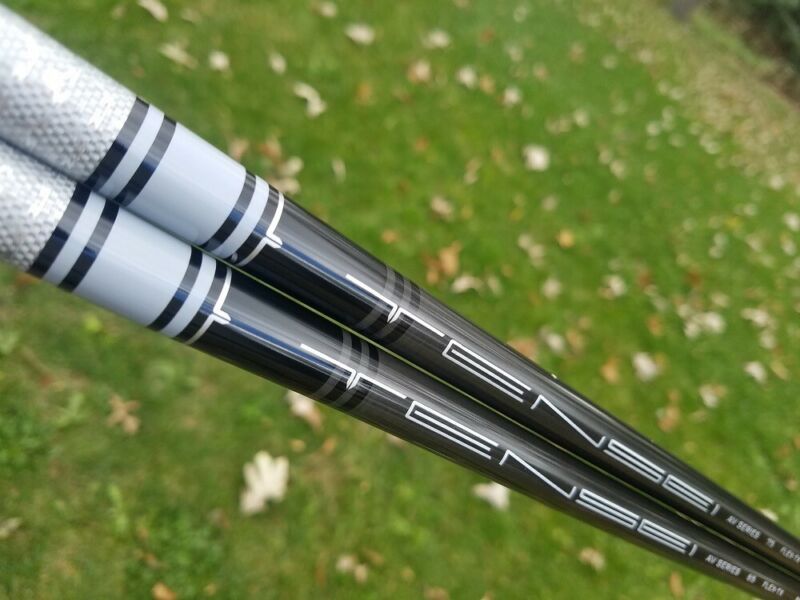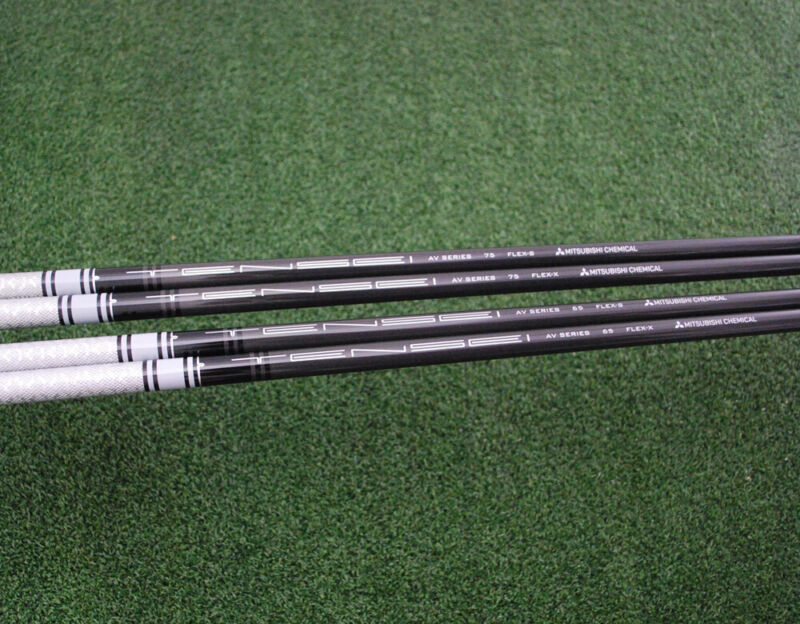Tensei White vs. Blue: Are They Different?
When it comes to golf shafts, the devil is often in the details – slight variations in design and construction can lead to significant differences in performance on the golf course.
This is particularly true for premium shafts like the Mitsubishi Chemical Tensei series, where each model has been engineered with specific player characteristics in mind.
In this article, we’ll be diving into a detailed comparison of two popular models from this line, the Tensei White and the Tensei Blue.
Are they truly different? The short answer is yes, but to truly appreciate their unique attributes, we need to dig a bit deeper.
So whether you’re an aspiring golfer aiming to refine your equipment or a seasoned pro exploring your options, stay tuned as we break down the nuances between these two golf shafts.
Tensei White and Blue: Reviews and Features

While both shafts share many similarities, there are some critical differences between them, and the most significant ones are the launch and spin profiles.
Tensei White Shaft Review
The Mitsubishi Tensei AV White is a golf shaft that offers both performance and versatility, making it a popular choice among golfers seeking a lower-launching, lower-spinning option.
It is crafted with the company’s innovative Aluminum Vapor (AV) technology in the butt-section, a design choice intended to add stability and deliver an improved feel, which many players find beneficial.
In terms of performance, the Tensei AV White stands out with its tip-stiff profile, making it ideal for players with faster swing speeds.
The lower launch and spin that this shaft provides can translate into superior control and consistency on the course, particularly for players who tend to generate high spin rates.
The shaft’s heavier weight compared to the Tensei Blue and Red lines helps to contribute to its stable feel.
This stability, coupled with its low-launch profile, can help to increase accuracy and improve shot dispersion, making it a good option for golfers striving for precision in their long game.
Tensei Blue Shaft Review
The Tensei AV Blue provides a balanced profile that suits a wide range of players.
It stands out for offering a solid mix of distance and control, making it a great choice for those looking to optimize their long game.
The shaft’s mid-launch characteristic helps in achieving a desirable ball flight that balances distance with accuracy.
The Tensei AV Blue shaft has a smooth, responsive feel throughout the swing, making it enjoyable to play while delivering a good level of feedback on contact.
This feel and response can help golfers with their shot-making and allow them to adjust their swing based on the feedback from each strike.
While not as heavy as the Tensei AV White, the Tensei AV Blue still offers sufficient stability for a wide range of swing speeds, contributing to its overall performance and versatility.
Let’s discuss the difference between the two shafts using some factors established above:
Mitsubishi Tensei White vs. Blue Shafts: The Differences
Materials
Tensei White is made with a combination of carbon fiber and resin, while Tensei Blue uses a combination of carbon fiber and boron fiber.
Boron fiber is more robust and durable than carbon fiber, allowing for a stiffer tip section and more stability during the swing.
Flex
The flex option is another significant area where both golf shafts differ. They are available in different flex options, including regular, stiff, and extra stiff.
However, Tensei Blue offers an additional flex option compared to Tensei White. It’s available in Ladies’ and Senior Flex.
If you have a slower swing speed, these flex options will be much better for you. Otherwise, you can choose either of the shafts.
Length
This area has no significant difference as both shafts are available in standard lengths, typically ranging from 43 to 46 inches.
This range is considered the standard weight and much longer than other golf shafts.
The long size is usually ideal for intermediate and expert golfers.
However, amateur golfers may need help to square on the impact, which can lead to inaccurate shots.
Weight
Tensei White and Tensei Blue shafts typically have similar weight ranges, with some models of each shaft being slightly lighter or heavier than others.
Tensei Blue indeed offers a wider variety of weight options.
And while Tensei White may have slightly limited options it is generally, somewhat lighter than Tensei Blue shafts, especially in the same flex and model.
Kick Point
The kick point, or bend point, refers to the location in the shaft where it bends most during the swing.
A shaft with a high kick point will keep the ball low, while a low kick point will keep the ball high.
The kick point of the Tensei White and Blue shafts can vary depending on the specific model and flex.
Generally speaking, Tensei White shafts have a mid-to-high kick point, while Tensei Blue shafts have a mid-kick point.
Hence, the Tensei White will be the best option to keep the ball lower and vice versa.
Torque Rating
The Tensei White has a lower torque rating than the Tensei Blue, which means it has less twisting during the swing and can lead to a more consistent ball flight and better accuracy.
As a general guideline, the torque rating for Tensei White shafts typically ranges from 3.3 to 4.7 degrees, while the torque rating for Tensei Blue shafts typically ranges from 4.0 to 5.0 degrees.
The Tensei Blue has a slightly higher torque rating, which can help players who struggle with hooks or slices.
Mitsubishi Tensei White or Blue: Which is Better?
The Tensei White and Tensei Blue are excellent golf club shafts with advanced materials and manufacturing techniques for optimal performance.
While they have some differences, both shafts can help players improve their game.
The better one between the two golf shafts depends on several factors, including your needs and preferences.
The Tensei White may be the better option if you’re looking for a lower ball flight and less spin.
If you want a mid-launch and mid-spin or need a slightly heavier shaft for improved feel and stability, the Tensei Blue may be the way to go.
Frequently Asked Questions
Mitsubishi Tensei AV Blue 55 vs 65: Any Difference?
The simple difference between the two is just the weight. Some flexes are available in 55 grams while others are available at 65 grams.
Basically, the AV Raw Blue Shafts have 5 flexes, TX, X, stiff, R, and R2, all of which are available at 55g.
However, only R, stiff, X, and TX come in 65g. There are also other weights such as 75g and 85g.
The one you choose depends on your swing speed and playing style. If you’re a senior player or amateur, start with 55.
If you’re a more advanced player, then your journey should begin with 65. If you want to be absolutely sure, then you should test the different weights before choosing.
Mitsubishi Tensei AV Blue 65 vs 75: What’s the Difference?
The Mitsubishi Tensei AV Blue 65 and 75 are two golf shafts that cater to slightly different golfing needs, primarily due to their weight difference.
The number in each model’s name (65 or 75) refers to the weight of the shaft in grams, with 65 being lighter than 75.
Does the Color Difference Mean a Thing?
If you want to determine whether there are real differences between the different Tensei color shafts, then you should watch the video below.
Title of Video: What’s the DIFFERENCE Between Tensei Shaft Colours?
Which Tensei Shaft Should I Use?
Choosing the right golf shaft is a very personalized decision and depends on your individual swing characteristics and playing style.
The Mitsubishi Chemical Tensei series includes several models with different characteristics that can affect a golfer’s performance.
Here are the general characteristics of a few of the Tensei models:
- Tensei CK Pro Blue: This model is designed to provide a mid-launch and mid-spin profile. It’s a good option if you’re looking for a balance between control and distance.
- Tensei CK Pro White: This model is more tip-stiff, leading to a lower launch and lower spin rates. It’s typically a good choice for golfers with higher swing speeds who want to control their trajectory and spin.
- Tensei CK Pro Red: This model provides higher launch and spin rates, making it a suitable option for golfers looking to increase their loft and who prefer a lightweight option.
- Tensei AV Series: The Aluminum Vapor (AV) Series utilizes a layer of Aluminum Vapor (AV) Coated Fiber in the butt-section for added stability and improved feel.
- Tensei Raw Series: This newer series, as of 2021, offers different profiles in the Blue (mid-launch), White (low-launch), and Orange (mid-launch, counterbalanced) configurations, much like the original CK Pro series.
Choosing the right shaft depends on many factors, including your swing speed, ball flight preferences, and desired feel.
It’s always a good idea to undergo a professional fitting to determine the best shaft for your needs. The fitter will use technology to measure different aspects of your swing and match you with the optimal shaft.
Related Posts:
- PXG 0211 Driver Vs. TaylorMade SIM: What’s The Difference?
- Radspeed vs Radspeed X: Are They Different?
- Ping Tour 65 Shaft Specs: The Ultimate Guide

Want to Get Better at Golf?
Get "Ben Hogan's Five Lessons" and join thousands of others improving their golf skills.
Learn the Fundamentals: Stance and Posture > Golf Grip > The Swing.
This book has LOADS of positive reviews. THOUSANDS OF REVIEWS. A MILLION COPY SOLD. CHEAP!
Get the Book Here
